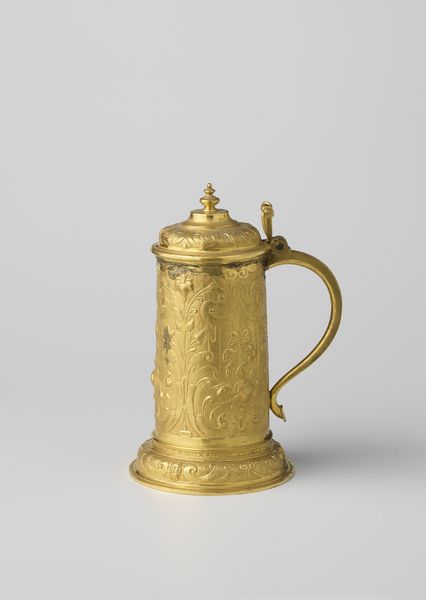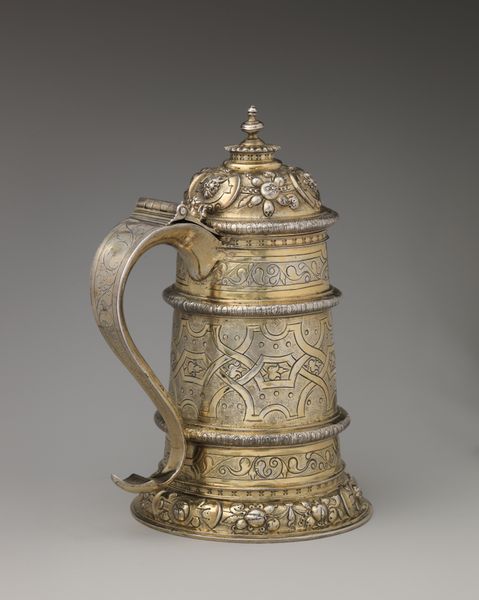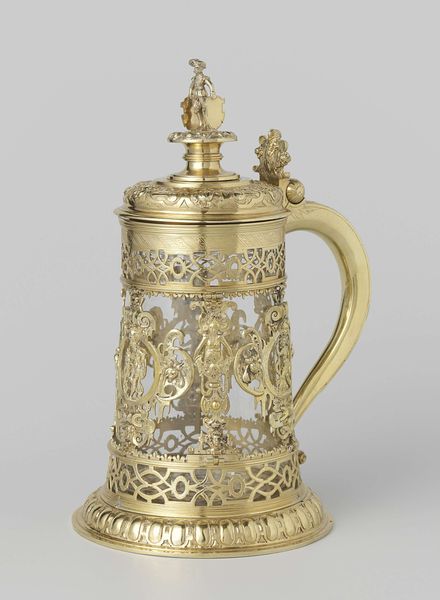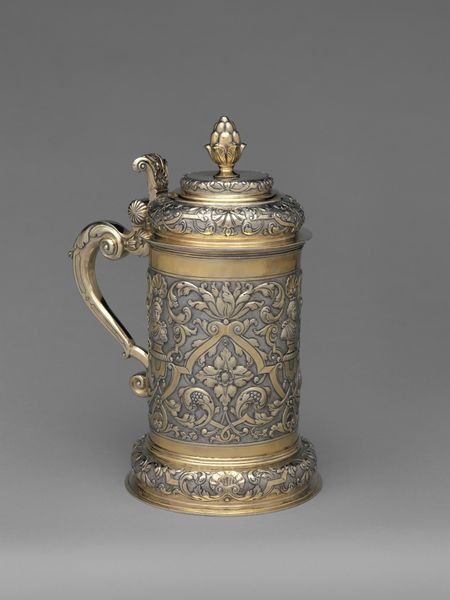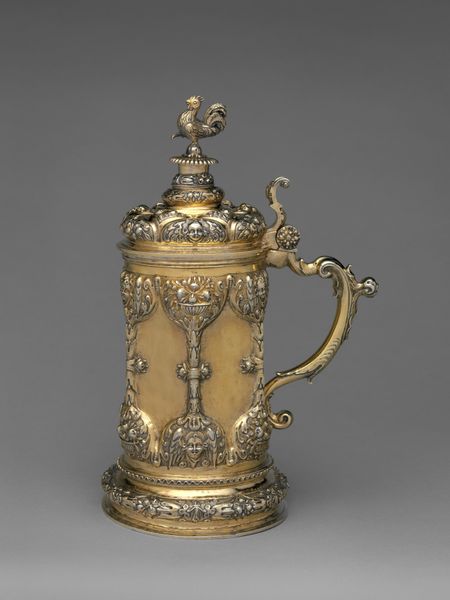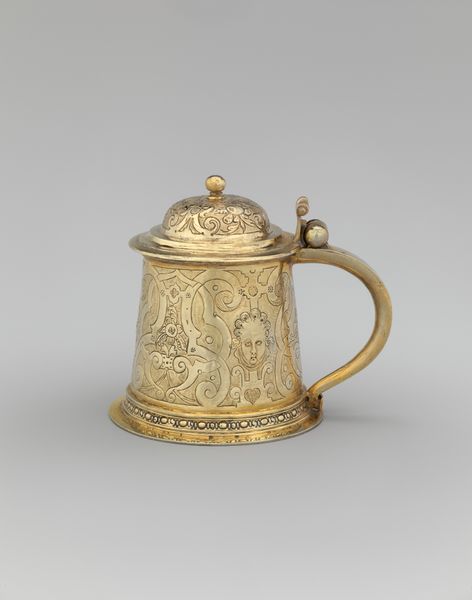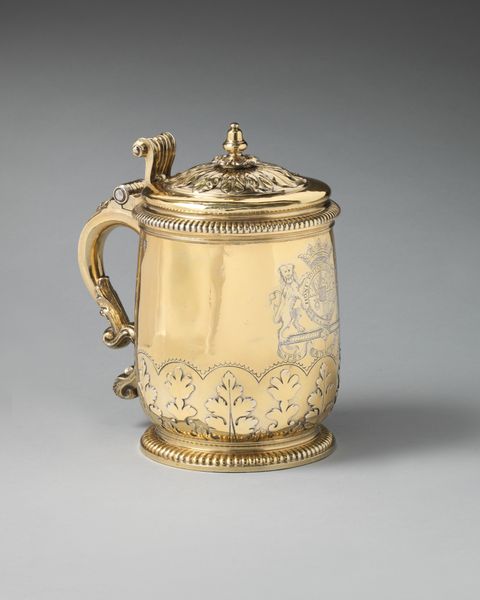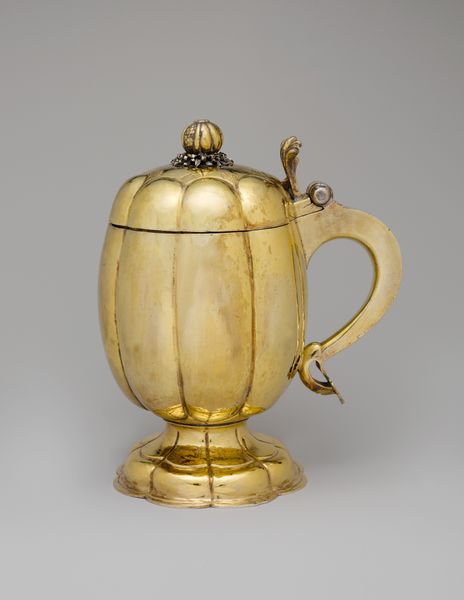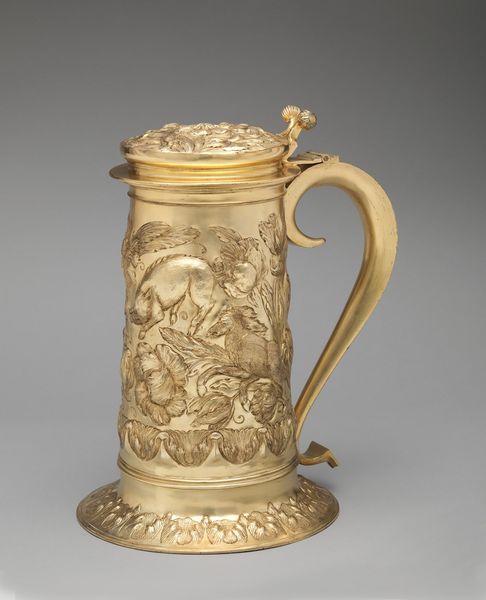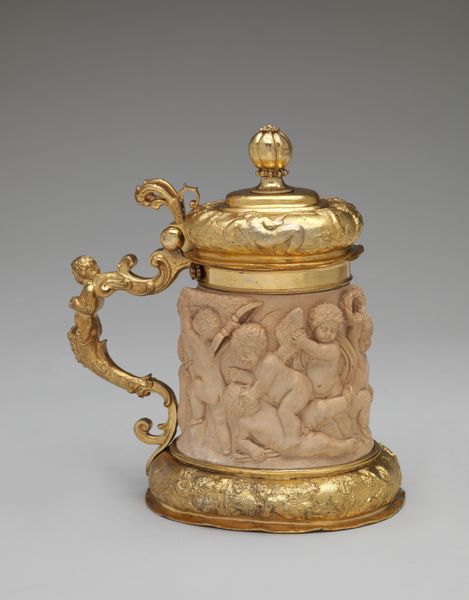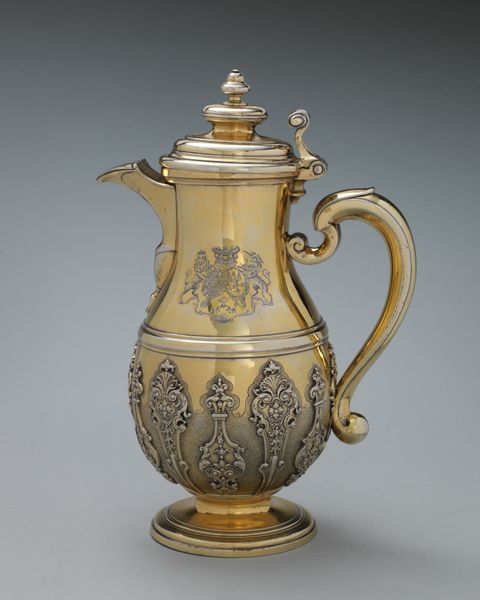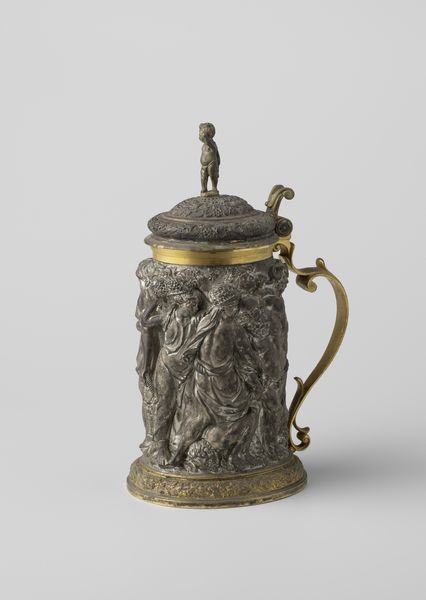
Galvanoplastische reproductie van een drinkkan met deksel met voorstellingen van mythologische figuren before 1880
0:00
0:00
Dimensions: height 28.5 cm, width 205 cm, weight 1533 gr
Copyright: Rijks Museum: Open Domain
Editor: Here we have a galvanoplastic reproduction of a drinking jug with a lid, depicting mythological figures; it was made before 1880 by Elkington and Co. in bronze and other metals. I’m struck by the richness of its ornamentation and the implied narratives it holds. How do you interpret this work? Curator: It's tempting to see this as a straightforward example of Baroque revivalism, but I think it's important to interrogate its context. These elaborate metalworks were often part of displays of wealth and power, especially during periods of industrial expansion. Who was consuming these images of mythological power, and what social anxieties were being assuaged through them? What narratives are being reinforced, and perhaps more importantly, whose stories are excluded? Editor: That’s a great point! So, beyond the aesthetic appeal, we should consider the power dynamics at play in its creation and consumption. It is quite literally decorative art. Does the choice of mythological scenes point to a deliberate construction of identity or lineage by its owner, connecting themselves to historical power? Curator: Precisely. Consider the appropriation of classical imagery in the service of constructing national identity. The figures, likely referencing Greco-Roman narratives, speak to the enduring influence of classical ideals on Western European identity, but selectively. How might this "revival" also serve to legitimize colonial ventures, drawing parallels between their own empires and those of the ancient world? And to whom was this visual language accessible? Editor: That’s a perspective I hadn't fully considered. So, it's not just about beauty; it's about understanding the object's role in reinforcing specific power structures. Thank you for opening my eyes to a new level of reading art objects! Curator: Art becomes far richer once we understand its ability to function within broader socio-political landscapes. It is vital that we understand artworks through their relationship to narratives of gender, race, and politics.
Comments
No comments
Be the first to comment and join the conversation on the ultimate creative platform.

